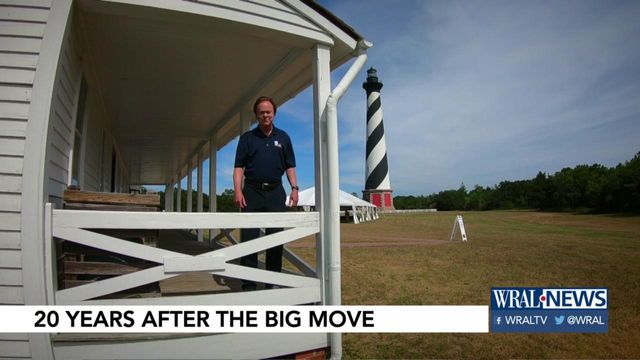For rangers, movers, tourists, marking Hatteras lighthouse move a chance for reunion
Twenty years after the controversy that resulted in the move of the Cape Hatteras lighthouse, the beacon is more popular than ever, according to rangers with the National Park Service.
Monday's celebration and commemoration of the move had the feel of a family reunion.
Mike Booher, who spent months of his own time as the official photographer of the Cape Light move was there. He's now 79 and remembered that time vividly.
"Ever so often in life, you come to a doorway, and you can go through it or not,” he said.
The Matyiko Brothers, Jimmy and Jerry, of Expert House Movers, engineered the move in 1999. They returned Monday as certain of their work as they had been in 1999.
"Once we had it loaded, the hardest part was getting it loaded, that’s where all the work was,” Jerry Matyiko said.
It took months to dig out and lift the lighthouse without disturbing the 1.25 million bricks of its structure, then it took 23 days to glide it back, 2,900 feet away from the sea. Lit in 1870, by the 1980s, the Cape Hatteras lighthouse built a quarter mile from the sea's reach had seen that buffer shrink to just about 100 feet.
The move was sold as a way to buy the lighthouse an additional 100 years of protection from erosion.
David Hallam, National Park superintendent, said on Monday, "You know I can’t tell you exactly how long this investment will last, but I can tell you this: It certainly should be several decades of security for the lighthouse."
Dr. Stan Riggs, coastal and marine geologist at East Carolina University, expects another move in the lighthouse's future as erosion continues to reconfigure the Outer Banks.
“Sea level rise is coming up faster and faster," Riggs said. "Storms are increasing in intensity. None of that was taken into consideration."











